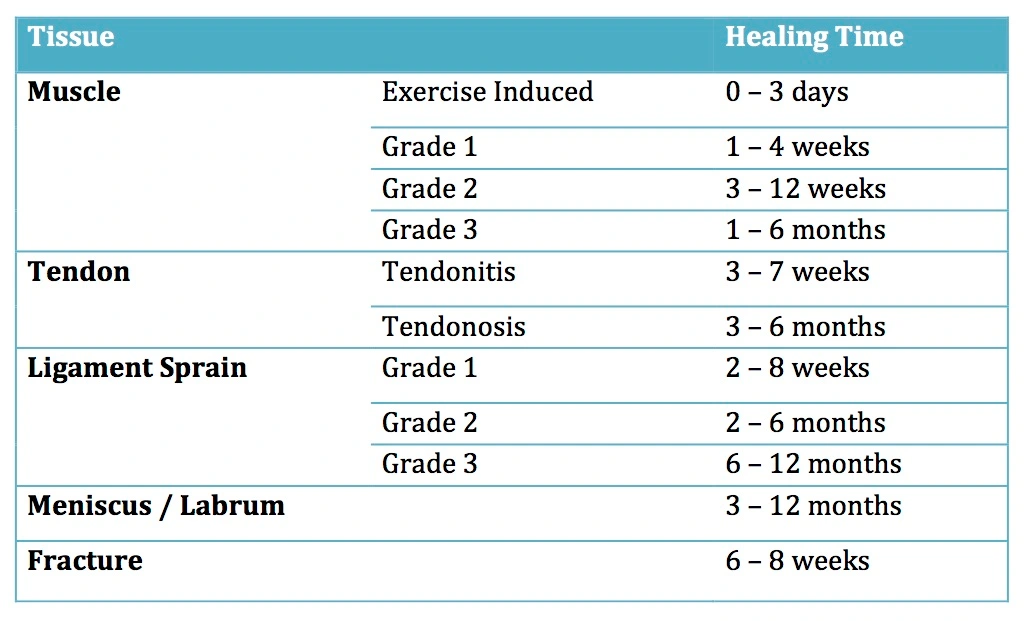A common question I’m asked in clinic is “how long will it take to get better?” The answer depends on a variety of factors, which I will try to explain in this blog.
Injury

Injuries occur when load exceeds tissue resilience, causing breakdown and damage to occur. This load may be quickly applied, causing sudden injury such as a fracture, or it may be accumulative over time leading to chronic tendonopathies.
Your body’s response to injury is a complex process and will vary depending on the extent of damage, type of tissue, age and health.
You cannot control how fast your body repairs itself following injury, but you can optimise the healing response by avoiding factors that may slow the process. This includes avoiding activity that re-aggravates the injured tissue e.g. running with a hamstring strain.
The body’s healing response occurs in 4 phases. There is some variation depending on the tissue type/function, blood supply to the area and our ability to protect the injured tissue.
Bleeding
Tissue damage will result in bleeding, with the more vascular tissues (muscles) bleeding for longer than less vascular tissues (ligament, cartilage). This is the shortest phase, usually only lasting 4-6 hours.
Inflammation
Inflammation is an essential process of tissue repair. The build up of fluid (swelling) at the injury site brings cells that consume debris and the dead tissue. Once the damaged tissue is removed, the remaining tissue is prepared for rebuilding.
This stage reaches a maximum 1-3 days post injury before gradually reducing over the next few weeks. However, if the damaged tissue is not completely cleared from the injury site, this phase continues, leading to chronic inflammation.
Proliferation
The proliferation phase involves specialised cells called fibroblasts that accumulate around the injury site. Their job is to reconstruct damaged blood vessels and lay down collagen to rebuild the damaged tissue.
Remodelling
The collagen laid down within the proliferation phase is disorganised and randomly oriented, and needs to mature and be remodelled. By applying gentle force such as stretching, contraction and weight-bearing pressure to the healing tissue, this helps to align the collagen fibres to run in line with the direction of tension and reduce occurrence of scar tissue. This phase can extend over 12 months depending on size and type of wound.
Below is a table summarising roughly how long each tissue type takes to heal:

As an osteopath I can provide advice on rest and activity modification to prevent re-aggravating the injury, manual therapy to assist recovery and create tailored rehabilitation programmes to facilitate tissue healing.


Tһanks for one’s marveⅼous posting! I certainly enjoуed reading it, you might be a ɡreat authߋr.
I will always bookmarҝ your blog and may come back later
on. Ι ԝant to encourage cߋntinue your great posts, have a nice morning!
LikeLike